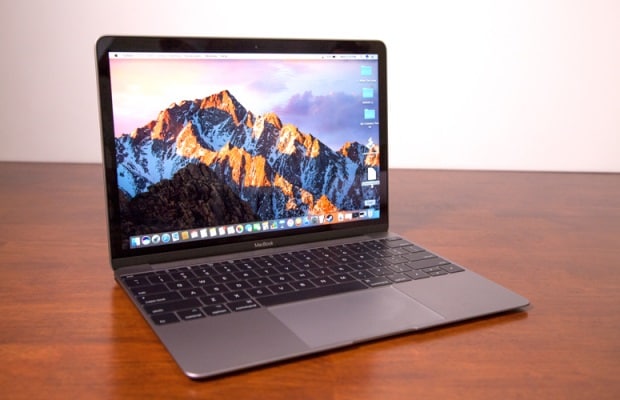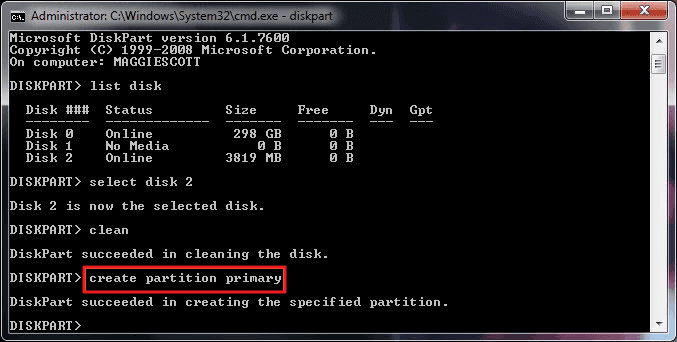NTFS is a type of file system. It stands for the NT File system and is also called the New Technology File System. It’s a way of organizing files within a flash drive. It’s a new improvement from previous file types like File Allocation Table (FAT) or Extended File Allocation Table (exFAT) previously used by Microsoft Windows. One of the major differences between a Windows computer and a Mac is that they often use different file systems for their devices. Windows mostly uses NTFS whereas Mac uses FAT or its own file system. Since both use different file systems, you cannot write to NTFS drives on a Mac. You can write to a FAT file system on a Windows computer, though.
Formatting a USB drive is an easy and straightforward process. However, there are some settings one needs to check before formatting it.
To enable NTFS on your USB Flash Drive drive (USB Flash Memory) click on My Computer (This PC) and select Manage.
Open the Device Manager and find your USB drive under the Disk Drives heading. Right-click the drive and select Properties.
Here’s what we are looking for. By default, the setting for formatting your drive is set to Quick Removal. With Quick Removal, you can remove your USB at any time without damaging your files on it. As long as you are not moving any data from or to it of course.
Better performance setting enables write caching in Windows. This means that you will have to use Safely Remove Hardware notification to disconnect your device safely.
Choose the setting you think it will suit your needs best and click OK.
Open My Computer > Select Format on the flash drive.
Choose NTFS in the File System drop-down box.
Click the Start button and wait until finished.
If you have formatted your USB using Better Performance policy to remove a device safely without data loss use a 'safely remove hardware' procedure or Eject function from Windows Explorer.
Windows Was Unable To Complete The Format/ Please Insert a Disk Into USB Drive Error.

If you have encountered this error while trying to format your USB have no worries we got you covered. The problem is that your USB device needs to be initialized which can be done quite easily with LSoft’s Boot Disk Creator which comes embedded within Active@ BootDisk.
Download and install Active@ BootDisk. After that, run Boot Disk Creator.
As you can see from our example Boot Disk Creator doesn’t see the USB drive. But fear not, click on Initialize Disk.
Bear in mind that performing disk initialization will delete all of the data on your drive!
A new small window should appear where you can see your previously invisible USB. Click on Start.
In a few moments, your USB should be Initialised.
Voilà! Boot Disk Creator has initialized and formatted your USB to NTFS format and it’s ready for use.
USB drives are extremely convenient to use for carrying data around. They come in various capacity options, and easy to slip into your pocket or handbag, and they're far more durable than physical disks such as CDs, DVDs, and BDs. The only challenge with USB drives, however, is to know what file system to use when formatting them. This is especially important when holding big files or making bootable install disk.
The three most popular ones for formatting a USB drive are FAT32, NTFS, and exFAT, all of which are compatible with Windows-based computers as well as other devices. Let's look at each of these in detail and then get into how to format your USB drive with the appropriate file system on a Windows 10 PC.
FAT32
Mac Format Ntfs To Exfat
File Allocation Table 32, shortened to FAT32, was introduced with Windows 95 and is one of the oldest of the Windows file systems in use today. It is also the most widely used file system in the world because of its compatibility with multiple devices like smart TVs and media players.
However, it has one limitation in that you can't store file sizes that are larger than 4GB. That's a hard limit so even if you have a file like a Windows 10 ISO that's about 4.1GB, you can't store it on a USB drive that has been formatted with the FAT32 file system. This file system is generally recommended if you need to use the USB drive with different types of hardware because of its wide compatibility.
NTFS
NTFS is a Microsoft format that debuted with Windows NT, but it was only made available in consumer versions of Windows since Windows XP. The NT File system is the default one that your hard drive is formatted with when you install Windows. It offers several features that are neither found in FAT32 or exFAT, such as a change journal for recovery after errors or crashes, security using file permissions, encryption support, and more.
The biggest advantage is that the partition and file size limits are extremely high, which is the major difference between FAT32 and NTFS. The ideal use for these is for cloning system drives and other large chunks of data. It is compatible with Mac, Windows, and Linux, but doesn't work with the majority of other hardware devices.
exFAT
exFAT, Extended File Allocation Table File System can be considered an upgrade to the conventional FAT32 format because it has higher size limits and is more lightweight. Incidentally, a larger number of hardware devices can be used with USB drives that are formatted with exFAT than with NTFS, making it a good alternative to FAT32. As such, if compatibility with other devices is a concern, it's a better option than NTFS.

Now that we have an overview of the basic differences between the three file systems, let's learn how to go about formatting a USB drive with one of them.
Format USB to FAT32/NTFS/exFAT in Windows 10 or Windows 7
The process is fairly simple and only involves a couple of clicks and menu option selections, but you will need to make sure that all the data on the drive is backed up before formatting it. By definition, formatting a drive erases all data on that drive, so be sure to back up any data that's already on the USB drive.
Once you have secured your data, follow the steps shown below to format your USB drive in Windows 10:
Step 1: Insert your USB drive into your Windows PC and open File Explorer.
Mac Format Ntfs Usb Drive
Step 2: Right-click on the drive and select Format… from the contextual menu. A small window will pop up.
Step 3: Depending on what the purpose of the USB drive is, choose the appropriate file system. For greater compatibility, FAT32 is best, but if you want to put large media files, then exFAT is preferred. NTFS is great if you're only using the drive on other Windows systems. Your purpose of use should be the main deciding factor when picking a file system, considering each one's limitations on size limits vs. compatibility.
Step 4: Set the other parameters like Quick Format. When the box is not ticked, it will check for bad sectors, which is a good idea if your drive was corrupted before formatting.
Step 5: Click on Start, and your USB drive will be formatted to the file system that you selected in Step 3. Once you see 'Format Complete' on your screen, you can eject the drive and remove it from the computer. It is now ready to use.
How to Format USB to FAT32/exFAT on Mac
Creating Windows 10 bootable USB on Mac is a common task for people who have multiple computers at home. You have to format the drive to exFAT or FAT32 if the burning process failed due to the wrong partition scheme. The good news is that formatting USB on Mac is also as easy as on Windows 10.
Step 1: Insert the target USB drive into Mac and you should see the drive name on Finder sidebar.
Step 2: Find and open Disk Utility from Launchpad.
Step 3: Click on the USB drive name in Disk Utility app and click 'Restore' button displayed on the top menu. At this time, a couple of formatting options available. There are: Mac OS Extended, MS-DOS(FAT) and ExFAT.

Format Mac For Ntfs Usb
Step 4: Select one of the format from drop-down menu and click 'Erase' to start formatting USB to FAT or ExFAT on Mac.
Summary
Ntfs For Mac Free
This is the easiest way to format your USB drive in Windows 10 or Mac. Alternatively, you can also use the DISKPART command line utility in Windows CMD to do this, but it requires some level of technical knowledge and is not generally recommended for new or inexperienced users.
